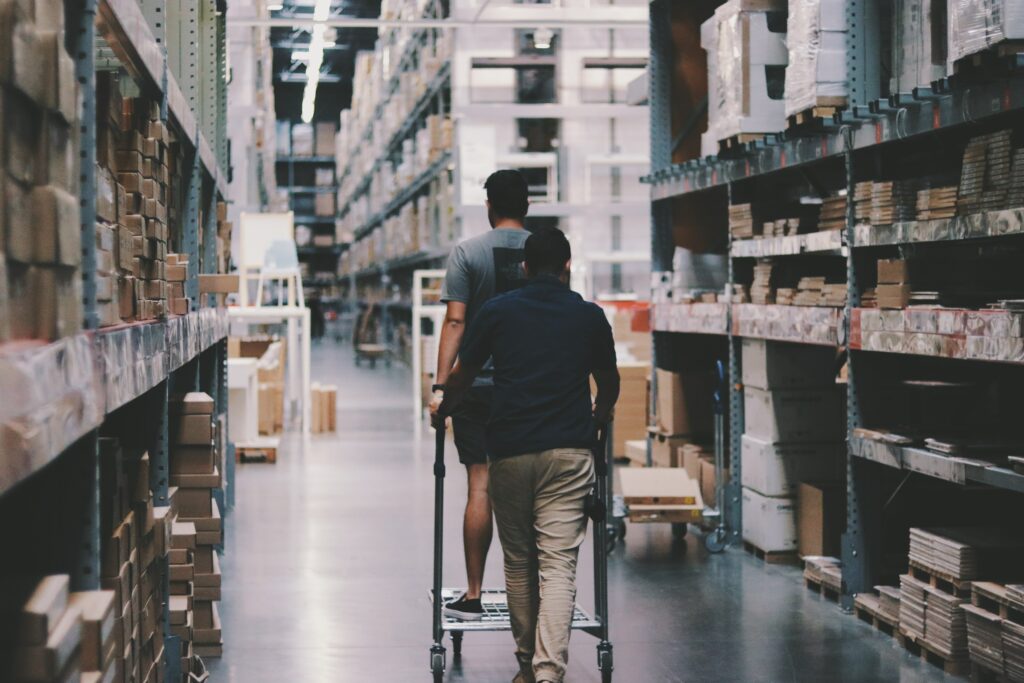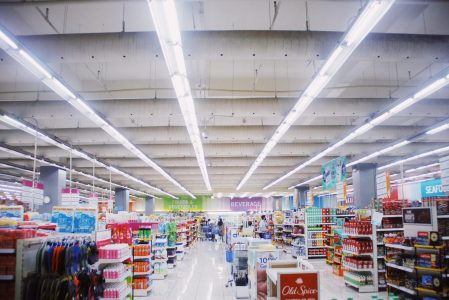The retail industry is constantly evolving, and with the rise of e-commerce, it’s more important than ever for brick-and-mortar stores to find ways to compete and remain relevant. One way for businesses to step ahead is by leveraging in-store analytics in Retail to gather insights about customer behavior and preferences.
In-store analytics refers to the collection and analysis of data about customer behavior and interactions within physical retail spaces. By using sensors, cameras, and other technologies, retailers can gather data on things like foot traffic, dwell time, product interactions, and more. This data can provide valuable insights into customer behavior and help retailers optimize the in-store shopping experience.
This article will explore the role of in-store analytics in the future of retail. Also, how it can be used to improve the customer experience, enhance operations and productivity, and drive sales and revenue. Lastly, delve into the ways in which in-store analytics is likely to evolve in the future and the impact on the retail industry.
The Benefits of In-Store Analytics
There are numerous benefits to using in-store analytics in the retail industry. Retailers can gain a deeper understanding of their customers and use this information to optimize the in-store shopping experience.
Some of the key benefits of in-store analytics include:
- Improved customer experience. In-store analytics can help retailers understand what attracts customers to their stores and what keeps them coming back. Provides data on foot traffic, dwell time, and product interactions. Consequently, retailers can identify areas for improvement and make changes to enhance the customer experience.
- Enhanced operations and productivity. Retailers can identify bottlenecks in their operations and make changes to improve efficiency. Data on foot traffic and dwell time to optimize store layout and product placement. Furthermore, reduce the time it takes for customers to find what they’re looking for.
- Increased sales and revenue. By analyzing data on customer behavior and preferences, retailers can make informed decisions. For example, which products to promote and how to price them. This can help drive sales and revenue for the retailer.
- Better inventory management. Identifying which products are most popular and which are not, allows retailers to optimize their inventory levels and reduce waste.
Altogether, in-store analytics can provide valuable insights into customer behavior. Additionally, it helps retailers optimize their operations, improve the customer experience, and drive sales and revenue.
Real-Time Insights and Personalization
In-store analytics has the ability to provide real-time insights and personalization. By using in-store tracking technologies, retailers can gather data on customer behavior in real time. Ultimately, use this information to tailor the shopping experience to individual customers.
For example, retailers can identify customers who are spending more time in certain areas of the store. As a result, make personalized product recommendations based on their interests and past purchases. Furthermore, using in-store analytics helps trigger personalized offers and promotions based on customer behavior, increasing the likelihood of a sale.

In addition to providing real-time insights and personalization, retailers can identify trends and patterns in customer behavior. By analyzing data over time, retailers can also detect emerging trends. Consequently, use this information to inform their product development and marketing strategies.
Overall, in-store analytics allows retailers to provide a more personalized and relevant shopping experience for their customers. This can lead to increased customer satisfaction and loyalty. It can also help retailers stay ahead of emerging trends and adapt to changing customer preferences.
Enhanced Customer Experience and Engagement
Another key benefit of in-store analytics is the ability to enhance customer experience and engagement. By collecting and analyzing data on customer behavior, retailers can identify areas for improvement. Once these areas have been detected, make changes to enhance the in-store shopping experience.
Retail Media Networks using in-store analytics can identify bottlenecks in the shopping process and make changes to streamline the experience. Retailers can also inform store layout and product placement, making it easier for customers to find what they’re looking for.

In addition to streamlining the shopping process, in-store analytics can also help enhance customer engagement. Providing personalized and relevant content the interactions will boost. Furthermore, tailoring in-store displays and promotions to individual customers increases the likelihood of a sale.
By using in-store analytics, Retailers can provide a seamless and engaging shopping experience for their customers. This leads once again to increased customer satisfaction and loyalty. The result of providing personalized and relevant content and offers is to drive sales and revenue.
Improved Operations and Productivity
In addition to enhancing customer experience and engagement, in-store analytics can also help retailers improve their operations and productivity. By collecting and analyzing data on customer behavior and interactions within physical retail spaces, retailers can identify inefficiencies in their operations and make changes to improve efficiency.
By using in-store analytics retailers can optimize their store layout and product placement based on foot traffic and dwell time data. This can help reduce the time it takes for customers to find what they’re looking for and improve overall productivity.
In-store analytics can also help retailers optimize their staffing levels and scheduling based on data on foot traffic and sales volume. This can help retailers ensure that they have the right number of staff on hand to meet customer demand and improve overall efficiency.
In conclusion, retailers can identify and address inefficiencies in their operations, leading to increased productivity and cost savings. Additionally, they can optimize their staffing levels and scheduling to better meet customer demand and drive sales.

The Future of In-Store Analytics
In-store analytics is likely to continue evolving in the future, with new technologies and approaches emerging to help retailers better understand and serve their customers. Some of the key trends and developments in the field of in-store analytics include:
- Increased use of artificial intelligence (AI) and machine learning. Retailers are increasingly using AI and machine learning to analyze and interpret data from in-store analytics systems. This can help retailers identify patterns and trends in customer behavior. As a result, they can make better-informed decisions about how to optimize the shopping experience.
- Greater integration with online data. As the gap between online and offline shopping continues to narrow, retailers see increased integration between in-store analytics and online data. Integrating data from both channels gives a comprehensive view of customers’ shopping habits. Retailers can use this information to tailor the shopping experience to individual customers.
- The rise of omnichannel retail. Omnichannel retail refers to a seamless shopping experience across multiple channels, including online, mobile, and in-store. As omnichannel retail becomes more prevalent, in-store analytics will play a key role in helping retailers understand and serve their customers across all channels.
The future of in-store analytics looks bright, with new technologies and approaches emerging to help retailers better understand and serve their customers. By leveraging in-store analytics, retailers can stay ahead of the curve and remain competitive in today’s rapidly-changing retail landscape.
Conclusion
In conclusion, in-store analytics plays a crucial role in the future of retail, helping retailers understand and serve their customers and optimize their operations. By collecting and analyzing data on customer behavior and interactions within physical retail spaces, retailers can gain valuable insights into customer preferences and make informed decisions about how to optimize the shopping experience.
The use of in-store analytics is likely to continue evolving in the future, with new technologies and approaches emerging to help retailers better understand and serve their customers. This includes the increased use of artificial intelligence and machine learning, greater integration with online data, and the rise of omnichannel retail.
In-store analytics offers a range of benefits for retailers, including improved customer experience and engagement, enhanced operations and productivity, and increased sales and revenue. By leveraging in-store analytics, retailers can stay ahead of the curve and remain competitive in today’s rapidly-changing retail landscape.
Shoppermotion’s Retail Media solutions provide in-store analytics to retailers. Using Shoppermotion’s in-store analytics technology, retailers can optimize their operations, improve the customer experience, and drive sales and revenue. Some of the key benefits of Shoppermotion’s in-store analytics technology include:
- Real-time insights: Shoppermotion‘s technology provides real-time insights into customer behavior, allowing retailers to make informed decisions in real-time.
- Personalization: Shoppermotion’s technology can be used to tailor the shopping experience to individual customers based on their interests and past purchases.
- Enhanced customer experience and engagement: Shoppermotion’s technology can help retailers identify areas for improvement and make changes to enhance customer experience and engagement.
- Improved operations and productivity: Shoppermotion’s technology can help retailers identify bottlenecks in their operations and make changes to improve efficiency.
Overall, Shoppermotion’s in-store analytics technology is a valuable tool for retailers looking to optimize their operations, improve the customer experience, and drive sales and revenue.






